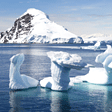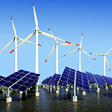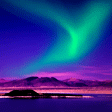- Home >
- Our Actions >
- Ambassador report
3
Comments
Urban Heat Characteristics in Akure Nigeria |
|---|
|
According to National Geographic Society, an urban heat island, or UHI, is a metropolitan area that's a lot warmer than the rural areas surrounding it. Heat is created by energy from all the people, cars, buses, and trains in big cities like New York, Paris, and London. Urban heat islands are created in areas like these: places that have lots of activity and lots of people. "Waste heat" also contributes to a UHI. People and their tools, such as cars and factories, are always burning off energy, whether they?re jogging, driving, or just living their day-to-day lives. The energy people burn off usually escapes in the form of heat. And if there are a lot of people in one area, that's a lot of heat. Urban areas are densely populated, meaning there are a lot of people in a small space. Urban areas are also densely constructed, meaning buildings are constructed very close together. When there is no more room for an urban area to expand, engineers build upward, creating skyscrapers. All this construction means waste heat—and heat that escapes insulation has nowhere to go. It lingers in and between buildings in the UHI. Nighttime temperatures in UHIs remain high. This is because buildings, sidewalks, and parking lots block heat coming from the ground from rising into the cold night sky. Because the heat is trapped on lower levels, the temperature is warmer. Urban heat islands can have worse air and water quality than their rural neighbors. UHIs often have lower air quality because there are more pollutants (waste products from vehicles, industry, and people) being pumped into the air. These pollutants are blocked from scattering and becoming less toxic by the urban landscape: buildings, roads, sidewalks, and parking lots. Water quality also suffers. When warm water from the UHI ends up flowing into local streams, it stresses the native species that have adapted to life in a cooler aquatic environment. The city of Akure in Nigeria has witnessed remarkable growth in its urbanisation in recent years, and its population during the past few decades has more than tripled. Urbanisation has been reported to modifiy local city climates (Balogun et al, 2011). The characteristics of urban heat island in Akure have been investigated and results reveal some interesting new findings on the diurnal and seasonal characteristics of the urban heat island in Akure. The UHI has been found to occur throughout the day and night except for a few hours after noon in November and December that existence of UCI, a reversed thermal contrast which may be as a result of relative abundance of moisture in the city compared to the rural surroundings was noticed. Weak daytime heat island exists throughout the wet season and extremely weak during the dry season accounting for reduced energy demand for cooling, but higher frequency of intense heat island at night time during the dry season is an indication of warmer nights capable of increasing the energy required for cooling. Results ascertain that the UHI is more of nocturnal phenomena in the tropical city of Akure as the highest UHI intensity occurs at night from 1800 to 2200 h having its maxima at 2100 h and also higher in the dry than the wet seasons. The elevation of temperature in the central urban areas at both day and night increases the potential for cooling of buildings. This may therefore lead to increased use of air-conditioning and hence adding more pressure to the electricity grid during peak periods of demand. This result has filled the knowledge gap on the nocturnal status of UHI in Nigeria as earlier studies were restricted to the daytime period due to lack of equipments capable of obtaining nocturnal data and has however supplemented previous attempts to fill knowledge gap of urban effects in tropical urban areas which is still insufficient as compared to the mid latitudes. Sources https://www.nationalgeographic.org/encyclopedia/urban-heat-island/ www.academicjournals.org/article/article1380283301_Balogun%20et%20al.pdf
|

|
|
|










 Previous : Soil: Earth's Largest Natu...
Previous : Soil: Earth's Largest Natu...









3 Comments
Adaora, thank you for your report. Well summarized report! So it seems like Urban Heat Island is also a bit of issue in Nigeria. If you get to see any major meausre by the government, please tell us about it.
Posted 20-08-2017 20:24
Hi Adaora! Thanks for sharing your report on Urban Heat Charateristics in Nigeria. This is true that UHI can have different impact in on every country depending on its location, degree of urbanization and so on. We should gather our knowledge to find appropriate ways to deal with this!
Posted 19-08-2017 17:13
That's an educating article up there. The subject matter is quite interesting to me as activities in Akure is quite less when compared to a more populated place like Lagos, Port Harcourt and Kano. Are there Urban Heat Islands in those states too? Or there blindspots to the Nigerian Environmental researchers?
Posted 16-08-2017 22:31